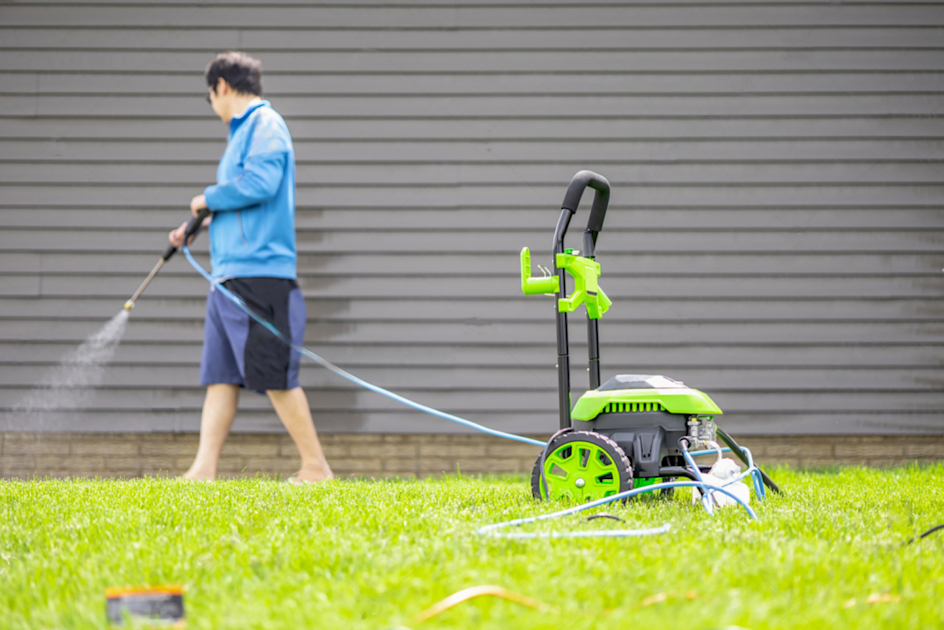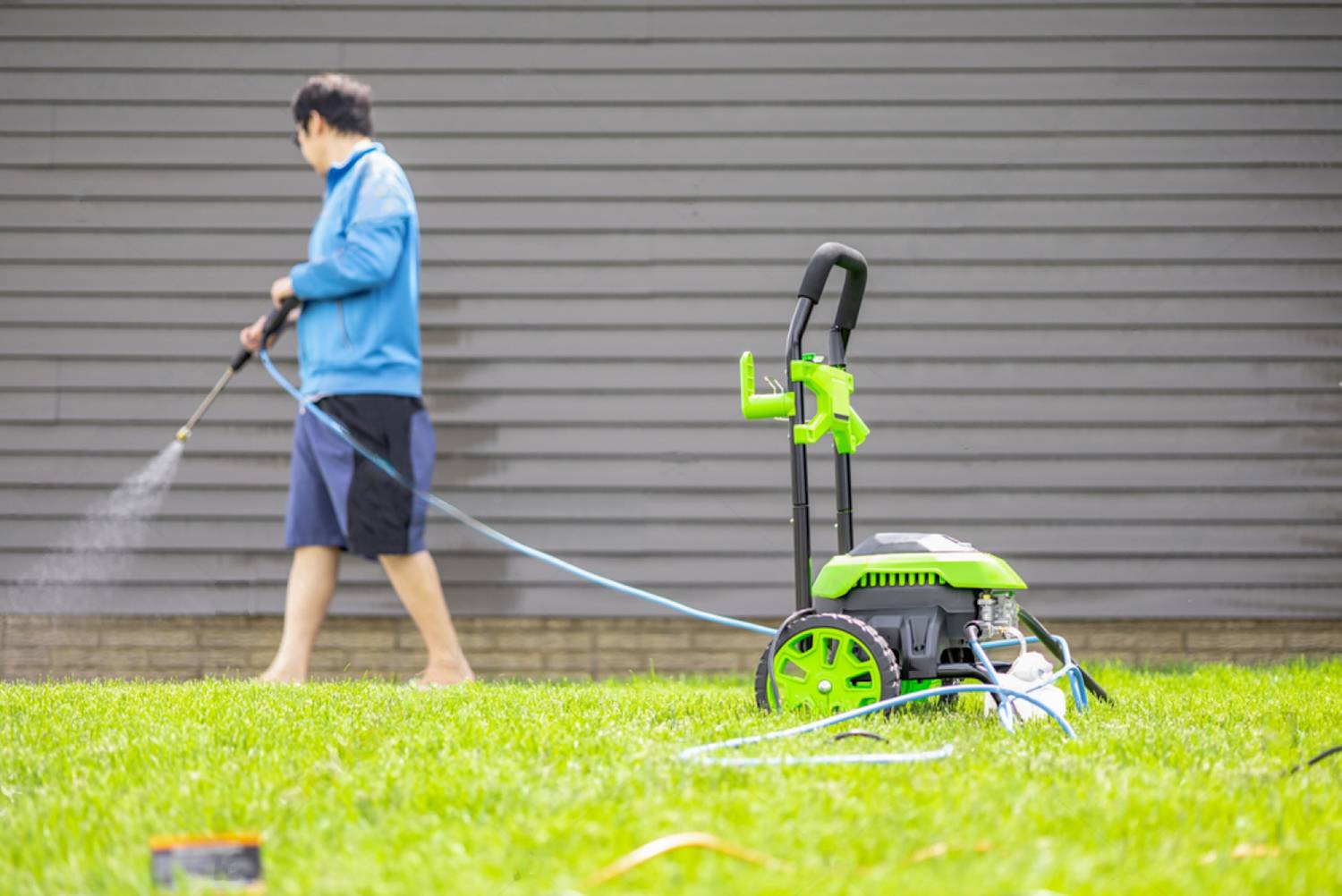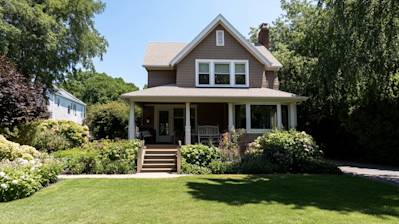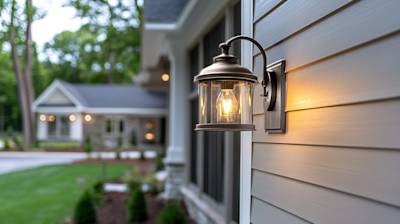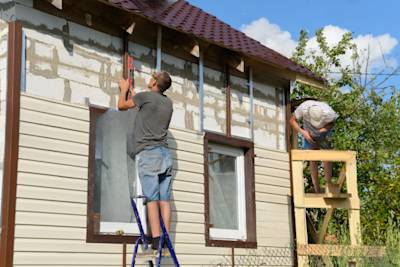Siding Maintenance Tips
As a Sacramento homeowner, you know how important it is to maintain the beauty and integrity of your property. One crucial aspect of home maintenance is taking care of your siding. Siding not only enhances the curb appeal of your house but also protects it from the elements. To help you keep your siding in top-notch condition, we have put together a comprehensive guide on DIY siding maintenance tips. Whether you have vinyl, wood, fiber cement, or stucco siding, these tips will ensure your siding stands the test of time and looks as good as new for years to come. As the leading Sacramento Siding Replacement Contractor, GVD Renovations & Remodeling is dedicated to helping homeowners like you achieve the best results with their siding maintenance efforts.
Understanding Your Siding Material
Before delving into maintenance tips, it's essential to understand the different types of siding materials commonly used in Sacramento. Each material has its own unique characteristics and maintenance requirements.
Vinyl Siding: Vinyl siding is a popular choice due to its low maintenance and durability. It is resistant to rot, moisture, and insects. Regular cleaning with a hose and mild soap is usually sufficient to keep vinyl siding looking fresh and clean.
Wood Siding: Wood siding exudes natural beauty and charm, but it requires more maintenance. Regular painting or staining is necessary to protect the wood from moisture and UV damage. Additionally, wood siding should be checked for signs of rot or pest infestations regularly.
Fiber Cement Siding: Fiber cement siding is known for its strength and fire resistance. It should be inspected annually for cracks or chips, and any damaged areas should be promptly repaired with a cement patching compound.
Stucco Siding: Stucco is a durable and low-maintenance siding option. However, it can develop cracks over time, especially in areas with temperature fluctuations. These cracks should be sealed promptly to prevent water infiltration.
Regular Cleaning and Washing
Regular cleaning is vital to prevent dirt, debris, mold, and mildew buildup on your siding. Depending on the type of siding you have, the cleaning process may vary.
Vinyl Siding: To clean vinyl siding, mix a solution of water and mild detergent. Use a soft-bristled brush or a pressure washer on a low setting to scrub the siding gently. Be cautious not to apply too much pressure to prevent damaging the siding or forcing water behind it.
Wood Siding: Wood siding can be cleaned with a mixture of water and mild soap. Use a soft brush to scrub away dirt and grime. Avoid using a pressure washer on wood siding, as the force of the water can cause damage.
Fiber Cement Siding: For fiber cement siding, a mild soap and water solution with a soft brush or cloth should suffice. Avoid abrasive materials that could scratch or damage the surface.
Stucco Siding: Cleaning stucco requires a soft brush or cloth and a mixture of water and mild detergent. Be cautious not to use excessive force to avoid chipping the stucco.
Regularly cleaning your siding not only enhances its appearance but also helps to prolong its lifespan and prevent the growth of mold and mildew.
Inspecting for Damage
Regular visual inspections are crucial to identify any signs of damage or wear on your siding. By catching issues early, you can prevent them from escalating into more significant problems.
Vinyl Siding: Inspect vinyl siding for any cracks, warping, or loose panels. Check for signs of fading or discoloration, which may indicate UV damage.
Wood Siding: When inspecting wood siding Look for signs of rot or pest infestations, such as termite tunnels or carpenter ant holes. Check for peeling paint or stains, as they can indicate water damage.
Fiber Cement Siding: Inspect fiber cement siding for cracks, chips, or damaged areas. Pay attention to the seams and edges, as these are vulnerable areas for water infiltration.
Stucco Siding: Check for cracks or chips in the stucco surface. Be particularly thorough around windows, doors, and other openings, as these areas are more susceptible to damage.
If you notice any signs of damage during your inspection, take immediate action to address the issue and prevent further deterioration.
Addressing Minor Repairs
Handling minor siding repairs on your own can save you time and money. Here are some DIY tips and tricks for common minor repairs:
Fixing Loose Panels: For vinyl siding, gently lift the panel and secure it back in place by nailing or snapping it into the locking mechanism. For wood siding, use galvanized nails to reattach loose boards.
Filling Small Cracks: For fiber cement siding, use a cement patching compound to fill in small cracks or chips. Smooth out the surface and allow it to dry before painting over it, if necessary.
Resealing Gaps: Use caulk or specialized sealant to fill gaps or seams in your siding. This will prevent water from seeping behind the siding and causing damage.
For more significant repairs or if you are unsure of how to handle a particular issue, it's best to consult a professional Sacramento Siding Replacement Contractor like GVD Renovations & Remodeling.
Dealing with Mold and Mildew
The Sacramento climate can create a conducive environment for mold and mildew growth on siding surfaces. Here's how to deal with these pesky issues:
Removing Mold and Mildew: Create a solution of one part bleach to four parts water and apply it to the affected areas. Allow the solution to sit for a few minutes before scrubbing the mold and mildew away. Rinse thoroughly with water.
Preventing Mold and Mildew: To prevent mold and mildew growth, ensure proper drainage around your home's foundation and ensure adequate airflow around the siding. Trim any vegetation that may be obstructing airflow or creating shade on the siding surface.
You can have a professional come out and repair the mold and mildew promptly and implement preventive measures, so that you can keep your siding looking fresh and clean all year round.
Trimming Vegetation Near Siding
While plants and trees can add beauty to your property, vegetation growing too close to your siding can pose risks.
Moisture Retention: When plants touch the siding, they can trap moisture against the surface, leading to water damage and the growth of mold or mildew.
Physical Damage: Branches and vines can scratch or dent siding materials, especially if they are growing vigorously.
To maintain proper clearance and minimize these risks, regularly trim back vegetation near your siding. Keep plants at least a foot away from the siding surface, allowing sufficient airflow and preventing moisture buildup. If you have trees with overhanging branches, consider pruning them to prevent leaves and debris from falling onto the siding during storms or windy conditions. By maintaining a clear space around your siding, you can protect it from potential damage and prolong its lifespan.
Sealing and Caulking
Proper sealing and caulking are essential to safeguard your siding from water intrusion and maintain energy efficiency within your home. Here's how to do it right:
Windows and Doors: Inspect the areas around your windows and doors for gaps or cracks. Use a high-quality silicone or latex caulk to seal these openings, preventing water and air from penetrating your siding.
Other Openings: Check for gaps around pipes, vents, and electrical outlets. Apply caulk or sealant to seal these areas and ensure a tight fit with your siding.
Weather Stripping: If you notice any worn or damaged weather stripping, replace it promptly to maintain an airtight seal around windows and doors.
By properly sealing and caulking, you can enhance your home's energy efficiency, prevent water damage, and keep your siding looking immaculate.
Handling Stains and Discoloration
Stains and discoloration can diminish the appearance of your siding. Here's how to tackle common stains without damaging the siding material:
Rust Stains: Use a mixture of water and vinegar or lemon juice to remove rust stains gently. Apply the solution to the stained area and scrub with a soft brush or cloth. Rinse thoroughly with water.
Paint Splatters: For paint splatters, use a paint remover or mineral spirits. Apply a small amount to a clean cloth and gently rub the paint until it loosens. Be cautious not to scratch the siding surface.
Water Stains: Water stains can be stubborn. Mix a solution of equal parts water and vinegar and apply it to the stained area. Allow it to sit for a few minutes before scrubbing with a soft brush. Rinse thoroughly.
Always test any cleaning solution on a small, inconspicuous area of your siding first to ensure it doesn't cause damage or discoloration.
Painting and Staining Siding
If your siding material allows for painting or staining, this can be an effective way to refresh its appearance and add an extra layer of protection. Here are some tips for a successful paint or stain job:
Clean the Surface: Before painting or staining, ensure the siding surface is clean and free from dirt, mold, or mildew. Use a pressure washer or a thorough scrubbing with soap and water.
Priming (if needed): Some siding materials, especially wood, may require priming before painting. Check the manufacturer's recommendations and apply an appropriate primer if necessary.
Choose the Right Paint or Stain: Use high-quality paint or stain that is specifically formulated for your siding material. Consider opting for a paint with UV protection to prevent fading.
Apply Even Coats: Apply the paint or stain evenly, following the manufacturer's instructions. Use a brush or roller, and take care to avoid drips or uneven coverage.
Allow Proper Drying Time: Allow the paint or stain to dry thoroughly between coats and before exposing the siding to any moisture or adverse weather conditions.
Properly painting or staining your siding can breathe new life into your home's exterior and protect it from the elements for years to come.
Preventing Pest Infestations
Pests like termites or carpenter ants can cause significant damage to your siding if left unchecked. Here's how to prevent them from becoming a problem:
Choose Pest-Resistant Materials: If you're replacing your siding or planning a renovation, consider opting for pest-resistant materials such as fiber cement or vinyl, which are less appealing to pests.
Keep Your Home Dry: Moisture attracts pests, so ensure proper drainage around your home's foundation and promptly address any leaks or water issues.
Remove Food Sources: Keep firewood and other potential food sources for pests away from your home. Trim back vegetation to minimize hiding spots.
Inspect Regularly: Regularly inspect your siding for signs of pest activity, such as small holes or wood shavings. If you suspect an infestation, contact a professional exterminator for evaluation and treatment.
By taking preventive measures, you can protect your siding from pest damage and maintain a beautiful, pest-free home.
Seasonal Maintenance Tips
Sacramento's climate can be challenging, with hot summers, rainy winters, and windy conditions. Here are some seasonal maintenance tips to keep your siding in excellent shape all year round:
Summer: Check for any signs of damage from the harsh sun or heat. Keep vegetation well-trimmed to allow adequate airflow and prevent moisture retention.
Winter: Inspect your siding for any cracks or gaps that may have appeared due to temperature fluctuations. Ensure proper drainage to prevent water from freezing against the siding.
Spring: Clean your siding thoroughly after winter to remove any dirt or debris that may have accumulated. Check for any signs of mold or mildew and address them promptly.
Fall: Before the rainy season starts, clean your gutters and downspouts to ensure water doesn't overflow and damage your siding. Check for any loose siding panels and secure them back in place.
By adapting your maintenance routine to each season's specific challenges, you can keep your siding resilient and looking its best year-round.
Safety Precautions
While DIY siding maintenance can be rewarding, it's essential to prioritize safety during these tasks. Here are some safety precautions to keep in mind:
Protective Gear: Wear appropriate protective gear, such as gloves, safety goggles, and long sleeves, to safeguard yourself from any potential hazards.
Stable Surface: Always work on a stable surface and use a sturdy ladder if necessary. Avoid overreaching, as it can lead to accidents.
Proper Tools: Use the right tools for each task and familiarize yourself with their proper usage to avoid accidents or damage to your siding.
Weather Conditions: Avoid working on your siding during adverse weather conditions, such as heavy rain or strong winds, as it can be hazardous.
Your safety is paramount, and taking the necessary precautions will ensure a successful and injury-free siding maintenance project.
When to Call a Professional
While many siding maintenance tasks can be handled on your own, there are instances when it's best to seek the expertise of a professional siding contractor, like GVD Renovations & Remodeling:
Major Repairs: If your siding has significant damage, such as extensive rot or large cracks, a professional contractor can properly assess the situation and provide appropriate repairs or replacement.
Extensive Damage: If your siding has suffered severe storm damage or other extensive issues, a professional can handle the repairs efficiently and restore your siding to its former glory.
Specialized Materials: Some siding materials, like James Hardie siding, require specific expertise and knowledge for repairs or replacement. An expert siding contractor will have the necessary experience with these materials.
Time and Convenience: If you have a busy schedule or lack the necessary tools and skills for certain tasks, hiring a professional siding contractor can save you time and effort.
When in doubt, consult a professional siding contractor like GVD Renovations & Remodeling to ensure your siding is in capable hands and receives the best care possible.
Siding Maintenance Checklist
To help you stay on top of your siding maintenance, here's a handy checklist you can follow:
- Regularly clean your siding to remove dirt, debris, mold, and mildew buildup.
- Inspect your siding for signs of damage, such as cracks, rot, loose boards, or gaps.
- Address minor repairs promptly, such as fixing loose panels or filling small cracks.
- Deal with mold and mildew using a bleach solution and take preventive measures to prevent their growth.
- Trim vegetation near your siding to prevent moisture retention and physical damage.
- Properly seal and caulk around windows, doors, and other openings in your siding.
- Treat stains and discoloration carefully without damaging the siding material.
- If applicable, repaint or restain your siding to enhance its appearance and protection.
- Implement measures to prevent pest infestations and consider pest-resistant siding materials.
- Adapt your maintenance routine to address seasonal challenges and weather conditions.
- Always prioritize safety during DIY siding maintenance tasks.
- Know when to seek the expertise of a professional siding contractor.
By following this checklist, you can ensure that your siding remains in pristine condition and protects your home for many years to come.
In conclusion, taking care of your siding through regular maintenance is essential to protect your investment and maintain your home's aesthetic appeal. By understanding your siding material, cleaning it regularly, inspecting for damage, and addressing minor repairs, you can extend its lifespan and keep it looking beautiful. Additionally, knowing how to deal with mold and mildew, trimming vegetation near your siding, and properly sealing and caulking are crucial aspects of siding maintenance. By handling stains and discoloration, considering repainting or restaining, preventing pest infestations, and following seasonal maintenance tips, you can further ensure your siding's longevity and functionality.
Remember, safety is of utmost importance during DIY maintenance tasks, and when in doubt, it's best to consult a professional siding contractor. At GVD Renovations & Remodeling, we are the experts in Sacramento Siding Replacement and pride ourselves on delivering top-quality siding solutions to homeowners like you. By following our DIY siding maintenance tips and incorporating our suggested checklist, you can keep your siding in pristine condition, protect your home, and enjoy the beauty of your property for years to come.
Tags: Siding Maintenance Tips,



